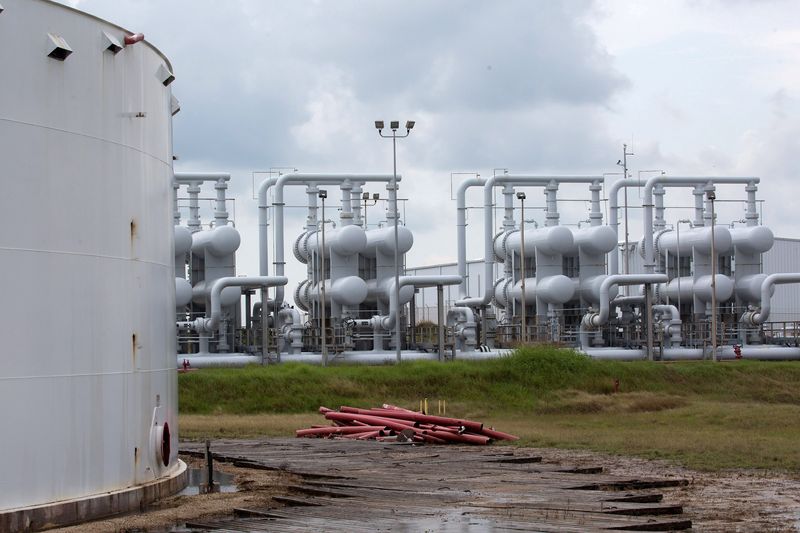(Reuters) -The United States is considering releasing 180 million barrels of oil over a period of several months from the U.S. Strategic Petroleum Reserve, two sources said on Wednesday, which would mark the third time the Biden administration has tapped the reserve in the last six months.
Oil prices have rocketed higher in recent weeks, with the Brent benchmark surging at one point to $139 a barrel earlier in March after Russia's invasion of Ukraine and subsequent sanctions slapped on the nation by the United States and allies.
Worldwide oil supply has been tightening for months, exacerbated in recent weeks by expectations that Russian exports could fall by anywhere from 1 to 3 million barrels a day. Russia is the second-largest crude exporter behind Saudi Arabia.
Most other major crude producers are either at capacity or are unwilling to increase output as the world faces months of tightening supply. The United States, the world's largest crude producer, is currently pumping out 11.7 million barrels a day, but that is not enough to meet world demand.
The U.S. Strategic Petroleum Reserve currently stands at 568.3 million barrels. This release would be the largest-ever since the reserve was created in 1974.
It is unclear if other members of the International Energy Agency, which include 29 other nations such as France, Germany and Japan, will follow the United States. The IEA has called an emergency meeting on Friday.
The United States announced a release of 50 million barrels in response to rising prices in late 2021, though an expected move in tandem from China did not materialize. The IEA, along with the United States, said it would release 60 million barrels earlier this month after the Russian invasion.
Year Amount of oil Reason for release
released
2022 Estimated 180 Tight oil markets due
million barrels of to ongoing disruption
oil by the United in supply after
States sanctions on Russia
2022 60 mln barrels from Tightening oil markets
IEA members, after Russia invaded
including 30 mln Ukraine, and
from the United U.S./allies sanctioned
States Russia
2021 50 million barrels Concerns about higher
from the United prices during fragile
States; recovery from the worst
undetermined amts of the coronavirus. Not
from India, China, coordinated w/ IEA.
Japan, Korea, UK
2011 60 million barrels, Loss of crude supply
with 30 mln coming from disruptions in
from the United Libya and other
States countries
2005 60 mln bbls, with Supply disruptions from
20.8 mln from the Hurricane Katrina
United States
1991 17.3 mln U.S. To minimize market
barrels disruptions during
Persian Gulf War after
Iraq invaded Kuwait
The United States also periodically releases oil on its own, sometimes through Congressionally legislated sales.
Washington has also released from its strategic reserve through exchange agreements, similar to loans, with private companies, often in the wake of local natural disasters. The companies have to repay by a certain date, with additional premium barrels as interest.
Year Amount Reason
released
2017 5.2 million Supply disruptions from
barrels Hurricane Harvey
2012 1 mln bbls Supply disruptions from
Hurricane Isaac
2008 5.4 mln bbls Supply disruptions from
Hurricanes Gustav and Ike
2006 750,000 bbls Calcasieu Ship Channel
closure
2006 767,000 bbls Closure in the Sabine
Neches ship channel from
a barge accident
2005 9.8 mln bbls Supply disruptions from
Hurricane Katrina
2004 5.4 mln bbls Supply disruptions from
Hurricane Ivan
2002 98,000 bbls Supply disruptions from
Hurricane Lili
2000 About 30 mln To establish an emergency
bbls fuel source in the U.S.
Northeast
2000 1 mln bbls Calcasieu Ship Channel
closure
1999 11 mln bbls To exchange crude grades
for Maya crude

1996 900,416 bbls ARCO Pipe Line Company
blockage